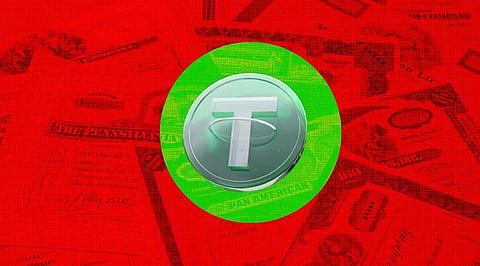
- Insights
- Cryptocurrencies
- Stocks
- White Papers
- Industry
- Geography
- Insights
- Cryptocurrencies
- Stocks
- White Papers
- Industry
- Geography


Tether is an asset-backed cryptocurrency stablecoin that is frequently referred to by one of its currency codes, USD. 2014 saw the introduction of it by Tether Limited Inc. The Hong Kong-based corporation iFinex Inc., which also operates the cryptocurrency exchange Bitfinex, is the owner of Tether Limited. Tether Limited has produced the USDT stablecoin across ten protocols and blockchains as of July 2022. Because Tether Limited kept $1.00 in asset reserves for each USDT released, it was initially intended to have a value of $1.00, which is why it is referred to as a stablecoin. With the greatest daily and monthly trading volumes of any cryptocurrency on the market in 2019, Tether overtook Bitcoin in terms of trading volume.
Finally, Tether has sold all of its remaining commercial paper assets. It now prefers to use American Treasury banknotes. According to reports, this disclosure is a result of Tether's continued attempts to improve transparency. It demonstrates that Tether's reserve management places investor security at the forefront. With this action, Tether resolved a long-standing issue with detractors who questioned the caliber of its reserves. Regarding this, Tether announced on its official Twitter account, "Breaking: Tether is happy to report that all of our reserves were previously made up of commercial paper. This demonstrates our dedication to backing our coins with the safest, most liquid reserves available."
Commercial paper is a brief-term, unsecured loan obligation for those who are not familiar. A business or financial institution issuing it. Larger credit risk is typically associated with commercial paper. Tether reported that as of July 1 of this year, their exposure to commercial paper was roughly $3.5 billion. It stated in August that as of the end of June, it had $66.4 billion in reserves. From $82.4 billion at the end of March, this amount decreased. Tether's chief technology officer, Paolo Ardoino, stated in a tweet earlier this month that as of September 30, the company held 58.1 percent of its overall portfolio in U.S. Treasury securities. From 43.5 percent at the end of June, it increased.
In a public release, Tether discussed the latest endeavor and stated, "Tether's dedication to backing its tokens with the safest reserves available on the market is demonstrated by the reduction of commercial papers to zero. This moves the stablecoin sector as a whole and Tether specifically closer to even greater openness and confidence." This year, there were rumors that a section of Tether's portfolio of commercial papers was 85% backed by Chinese or Asian commercial papers. Further rumors said that the commercial papers were being sold at a 30 percent discount. At a time when China Evergrande Group was on the verge of collapse, this may have had excessive exposure to Chinese commercial paper. It ranks among the top Chinese real estate developers.
On the other side, Tether refuted this charge. In order to "induce further panic in order to create further profits from an already strained market," it was stated that the rumors were made up. Twitter user Gabor Gurbacs tweeted in relation to this: "The Tether crew and @paoloardoino remain faithful to their word as usual. Paolo predicted that by the end of October, CP exposure will be zero. Done. Watching the asset reserve CP exposure to zero is exciting. It provides Tether with a solid foundation to increase adoption over the next ten years. The biggest stablecoin, notably, is USDT. It runs on a number of different blockchains. Additionally, it is often recognized as the foundation of the cryptocurrency economy as it is the most traded crypto asset.
